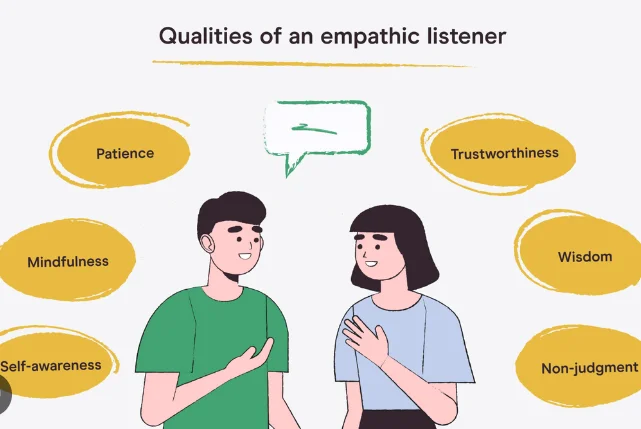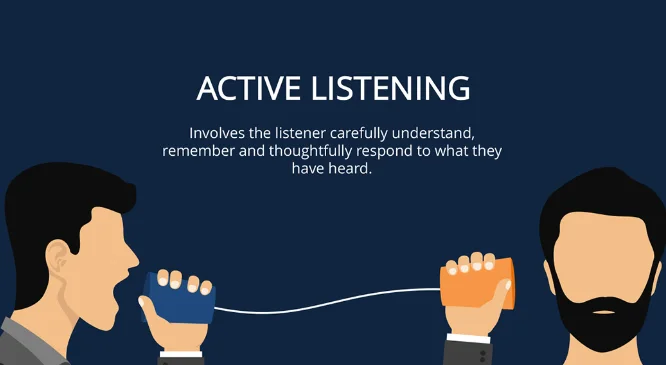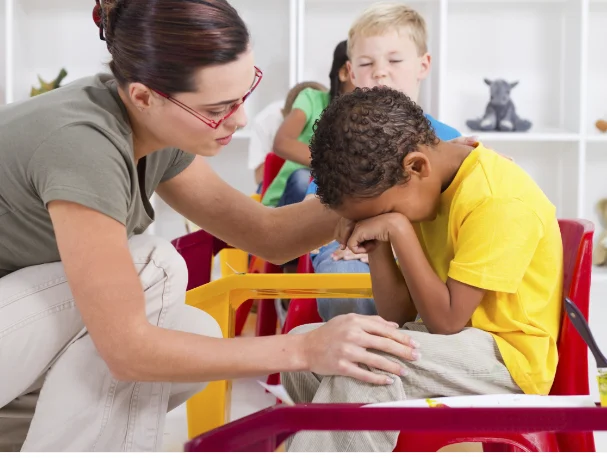
Update: This article was last updated on 25th November 2023 to reflect the accuracy and up-to-date information on the page.

Image Source: https://www.understood.org/
Mumbo Jumbo, slumped posture, tight-lipped, coyness, sulkiness, aggressiveness, nervousness, etc. – have you noticed any such things in your child when they communicate? Are you conveniently ignoring them? That means you are not paying attention to your child’s communication skills. It may sound harsh, but ignoring communication skills could jeopardize your child’s future because the demand for professionals with soft skills is on the surge. They are more valued than technical skills.
Can’t believe this.
Then, believe the study published by Wonderlic, a trusted name in pre-employment assessment. According to the study, 93% of hiring leaders stated that soft skills are an “essential” or “very important” element when making hiring decisions. What’s more, many employers reported that soft skills are more important than tech skills.
And that’s not all.
Soft skills have become such an integral part of the hiring process that the top-notch global management company, McKinsey, carried out a report on the crucial role of soft skills in the workspace. The McKinsey report underlined the rise in demand for soft skills in the modern labor market and that it will continue to grow until 2030.
We interchangeably use communication skills and interpersonal skills and soft skills.
What does it mean?
Coherence, eloquence, politeness, and assertiveness without aggressiveness are some of the elements of flawless communication. Communication skills have become an enabler for success. A fact substantiated by the LinkedIn Global Talent Trends Report, which says 92% of professionals who acquire talent report that soft skills are more important to hiring than hard skills. The LinkedIn Workplace Learning report puts soft skills at the top of education priorities for 59% of US HR managers who believe it is difficult to find candidates with the right soft skills.
The fact that soft skills have become essential job skills underlines their importance.
Are soft skills inherent?
The answer is that some people are born with soft skills and some learn them.
A lot of children have major trouble putting their ideas into formidable sentences and with the everlasting fear of judgment, they fail to speak well. But they can overcome this handicap.
How?
Everything starts at home. Here are 11 ways to improve communication skills in children:

Image Source: https://preply.com/
1. Talk, Talk, Talk…
The primary element of teaching effective communication skills is to initiate conversations. Encourage your kids to express themselves. Ask them to narrate their experiences in the playground, with friends, in school, etc.
Weed out the hurdles in their communication; prompt them with the right words or phrases when they are stuck.
2. Create a cozy and comfy communication environment
Children often suffer from inhibitions. They need the right environment to communicate and open up. For instance, many children are comfortable when you put them to bed – they talk and share without any inhibitions before drifting away to the world of dreams.
Others open up while eating and many turn into chatterbox while going for a drive. You have to find your child’s comfort zone.

For that, be observant. If you want them to open up, avoid preaching during the conversation. Try to build empathy.

Image Source: https://www.paretolabs.com/
3. Be an empathetic and compassionate listener
It is important for children to feel genuinely heard. Listening is a part of effective communication skills. There is a dearth of good listeners. So, make sure that when your child is sharing a story, you are attentive. Listen intently to what your child has to say and ask follow-up questions.
For instance, if the conversation revolves around their school project, first ask them to share their plans to complete the project.
Avoid giving your input. You can softly insert your suggestions when they are stuck.
4. Body Language
The right body language, perfect gestures, and controlled facial expressions are part of good communication skills. It could be tricky to teach them about the right body language.
But you can start with simple things – tell them they should avoid rubbing their eyes or twisting their hands, tapping their foot, or sticking their tongue out while speaking.
According to a Forbes article, one of the most annoying things a speaker can do, in person or on television, is stick his or her tongue out while speaking. Tongue darting is not a sign of good communication skills.

Image Source: https://www.theladders.com/
Some children are fidgety and restless while talking. So as a parent, you have to notice these things and help your child get rid of such habits while communicating.

5. Picture Storytelling
Picture storytelling is an engaging and fun way of learning communication. You can show pictures to your child and ask them to arrange them in a logical sequence and create a story out of them.
Encourage them to talk about what they perceive in the pictures, their colors, and other details.
Image Source:https://martech.org/
6. Active Listening
The foundation of effective communication is active listening, a process whereby learners engage in activities that require effective verbal expressions, fostering interactive engagement that contributes to enhanced communication proficiency.
Active learning components that help in improving communication skills include Interactive Discussions
- Collaborative Projects
- Problem-Solving Scenarios
- Role-Playing Exercises
- Real-world Applications
- Storytelling and Narrative Techniques.

Image Source: https://slidemodel.com/
These components collectively contribute to a holistic approach to enhancing communication proficiency through active learning.

For instance, communication around a fight with a friend or a classroom incident can make emotions build up.
So, teach them to narrate an incident without getting emotional.
7. Avoid emotional conversations
It is extremely challenging to keep our emotions aside while talking. Forget about children, even adults can’t do it. However, good communication skills require you to have control over your emotions. Children are often drawn into an emotional conversation.
8. Teach Empathy
Empathy is a beautiful trait. When you teach your kids communication skills, try to inculcate a sense of empathy and consideration of the feelings of others in them.
Children must know that the world exists outside their viewpoint too and they should be ready to listen to what others have to say.
This helps them become better listeners and also speak more respectfully.

Image Source: https://www.google.com/

Image Source: https://elearningindustry.com/
9. Encourage Introspection
Children are very observant when it comes to their surroundings, but they hardly introspect. Introspection means analyzing one’s feelings and thoughts.
For instance, when your child is rude to someone or angry with something, you gently try to make them think about what exactly triggered their emotions. Coax them into finding the right answer.
Understanding yourself is an important element of speaking well.
10. Teach Respectful Vocabulary
Being straightforward or transparent is good, but not at the cost of others’ dignity or self-esteem. It is important to teach children to communicate their emotions without becoming rude or offensive.
Anger is man’s biggest enemy, and it ruins everything. It is natural for children to feel angry and react violently to some situations.
Parents must teach their children respectful alternatives for such conversations and remind them that anger often makes things worse.
For instance, calling someone stupid may have an adverse effect than saying I don’t quite agree with you. Moreover, there are a lot of cultural terms that are used in a derogatory manner for a particular set of people, communities, or society.

Children may never get to know the origin of such terms. Therefore, it is the responsibility of parents to make their children aware of such terms.
Sometimes lack of vocabulary makes people sound round. The intent is good but the words used to express the feelings are not gentle. Communication skills backed by beautiful vocabulary will give your child an edge over others.

11. Encourage Journaling
Writing brings clarity to thinking. Encourage your children to write their day-to-day activities and feelings. It can be very fruitful and help in letting out their emotions easily. The exercise could make them articulate.
This could also help them feel more confident and prepared before approaching someone to have verbal communication.
So, we have shared 11 ways of effective communication with you. You can start with any, depending upon the age of your child.
You can also take the help of communication activities and games available for kids.
So what are you waiting for, get started!
Moonpreneur is on a mission to educate and ignite the flames of entrepreneurship through our holistically created online STEM programs, which will help kids master the futuristic sciences such as Robotics, Game Development, App Development, Advanced Math, Math-Quiz to test your kids knowledge and much more!!
Register for a free 60-minute robotics workshop today!
















What’s one surprising way you’ve seen a child enhance their communication skills in everyday situations?
I once witnessed a child, through playing collaborative video games, develop exceptional teamwork and communication skills, effectively coordinating strategies and problem-solving with peers.
How can parents and educators encourage shy or introverted children to develop strong communication skills?
Encouraging small group activities, providing a supportive environment, and praising their efforts rather than outcomes can empower shy children, gradually boosting their confidence and communication abilities.